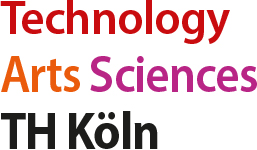The presentations of Ms CompScienced Business Intelligence classes (winter semester 2014/15) are held. The presentations are public and everyone with interest is welcomed.
Schedule – CUAS Ms Computer Science Business Intelligence – Final Presentations
Day 1: 12. January 2015, Room 2108
12.15 – 12.35
Anatol Tissen: Semantical Data Warehouse-Model
This approach models conceptually at the interface between IT, department and user. It describes basics of modelings, meta-models and meta-meta-models. It is explained why it can be useful to have such an meta-perspective. A practical application should be used applying this approach onto the Northwind scenario.
12.45 – 13.25
Kieu Dai Tran, Ludger Schönfeld: ADAPT as one example of semantical modeling
ADAPT has become a state-of-the art modeling syntax for multidimensional models. A first overview ADAPT syntax should be given. A practical applications on the multidimensional Northwind model is given. Advantages, disadvantages problems and benefits should be discussed.
13.45 – 14.25
Ilya Sukhov, Sheida Ghaedi Sharafi: Reference models, blueprints patterns for DWH/BI
The sense of reference-based modelling is described. Reference models, blueprints and patterns should help to shorten DWH/BI projects. May it fulfill what is promised?
14.35 – 15.15
Öyküm Pırıl Utku, Jannik Kutscher: The Common Warehouse Metamodel (CWM) Specification
Standardization can be one key issue to industrialize DWH/BI. CWM specified by OMG defines the modeling of metadata for objects found in a data warehouse environment. It is based on the standards. The basic idea of CWM are discussed. For which purposes can it be useful?
Day 2: 19. January 2015, Room 2108
12.15 – 12.35
Markus Engelke Ontologies for the development of data warehouses
Many entities in DWH/BI-related domains have an ambiguous or fuzzy description and sometimes it is even contradictory. Ontologies are used to offer a formal naming and definition of the types, properties, and interrelationships of the entities for a particular domain of discourse. Can their usage for DWH/BI-related domains help to design data warehouses?
12.45 – 13.25
Kelly Dielle Olong; David Blervaque: Data Hardcore Table Comparisons: Dimensional and Data Vault
Data Vault as a modeling approach between 3rd normal form and dimensional STAR has become a state-of-the-art techniques for Core Data Warehouse modeling. It is promised that Data Vault enables simple extension of existing models and data warehouses. It is claimed to make DWH more “agile”. Is this true? A comparison is made and additionally applied onto our Northwind scenario.
13.45 – 14.05
Stefan Kirsch: Conceptual Modelling of ETL Processes
A conceptual modeling concept of a data warehouse design process is proposed in a customizable and extensible manner, so that the designer can enrich it with his own re-occurring patterns for ETL activities including a ‘palette’ of a set of frequently used ETL activities. Is this a helpful approach? Can it be used for the ETL modeling in the Northwind scenario?
14.15 – 14.35
Eugénie Saliou: ETL-Taxonomy and Standardization
Do we have a need for standardizing ETL processes that feed data Warehouses? A generic categorization of ETL activities is described which is typically used by popular commercial ETL tools. Reusable patterns should be used for improving the efficiency of ETL flows. The core ideas are presented and an example is given how it can be applied with a commercial ETL-tool like SAS DI Studio.
14.45 – 15.25
Muhammad Zubair, Regys Mene: BI Framework, Comparision of different Frameworks
IT-Frameworks should help developing and implementing IT-solutions by an ensemble of methods, concepts, tools etc.. Especially enterprise architecture frameworks have established for the aligning of IT applications with a company’s business needs from an architectural point of view. Can this approach used to develop BI-Architecture?
Day 3: 26. January 2015, Room 2108
12.15 – 12.55
Viktoria Schaale, Muaaz Asif: Approaches to DWH Automation
Model Driven Architecture (MDA) is a standard framework for software development. It helps to support the complete life cycle of designing, deploying, integrating, and managing applications. Is it possible to align the DWH development process to MDA. Can MDA be used for the development of data warehouses and what are the benefits? What are the prerequisites to start automation of DWH/BI?
13.05 – 13.25
Christoph Röhr: Selfservice BI – BI without IT?
Currently, BI development is complex, business users need special skills to use tools and their possibilities to change reportings are very restricted. Nowadays, a change of paradigm can be observed. Users would like to become more independent from IT. What is possible and what is state-of-the-art?
13.35 – 14.05
Dominic Leuchter: DWH/BI too great for SMB?
Typically BI infrastructure is developed in great companies.. But what about SMBs? Can they get benefits from an efficient and effective reporting infrastructure. And if the answer is yes, where is the roadmap to establish a smart BI-concept?
14.25 – 14.45
Deepika Manoharan: Knowledge Management in Consulting Companies
BI consulting companies are knowledge intensive enterprises. They transfer knowledge for the information management intoi their customer’s industry. But what about information management in BI companies itself? Do they need knowledge management?
14.55 – 15.15
Aminul Islam: Data Quality / Information Quality for Northwind
A couple of various approaches to DQ/IQ exist. Which of them make sense in the context of our Northwind scenario. Examples are shown how to apply DQ/IQ measures.
15.25 – 15.45
Misbahur Rahman: Testing of Data Warehouse systems
To be sure that information is reliable can be an enterprise critical issue. Here testing should be in place. What are typical concepts and methods and how can they be applied? Examples using SAS and the Northwind DB will be demonstrated.
